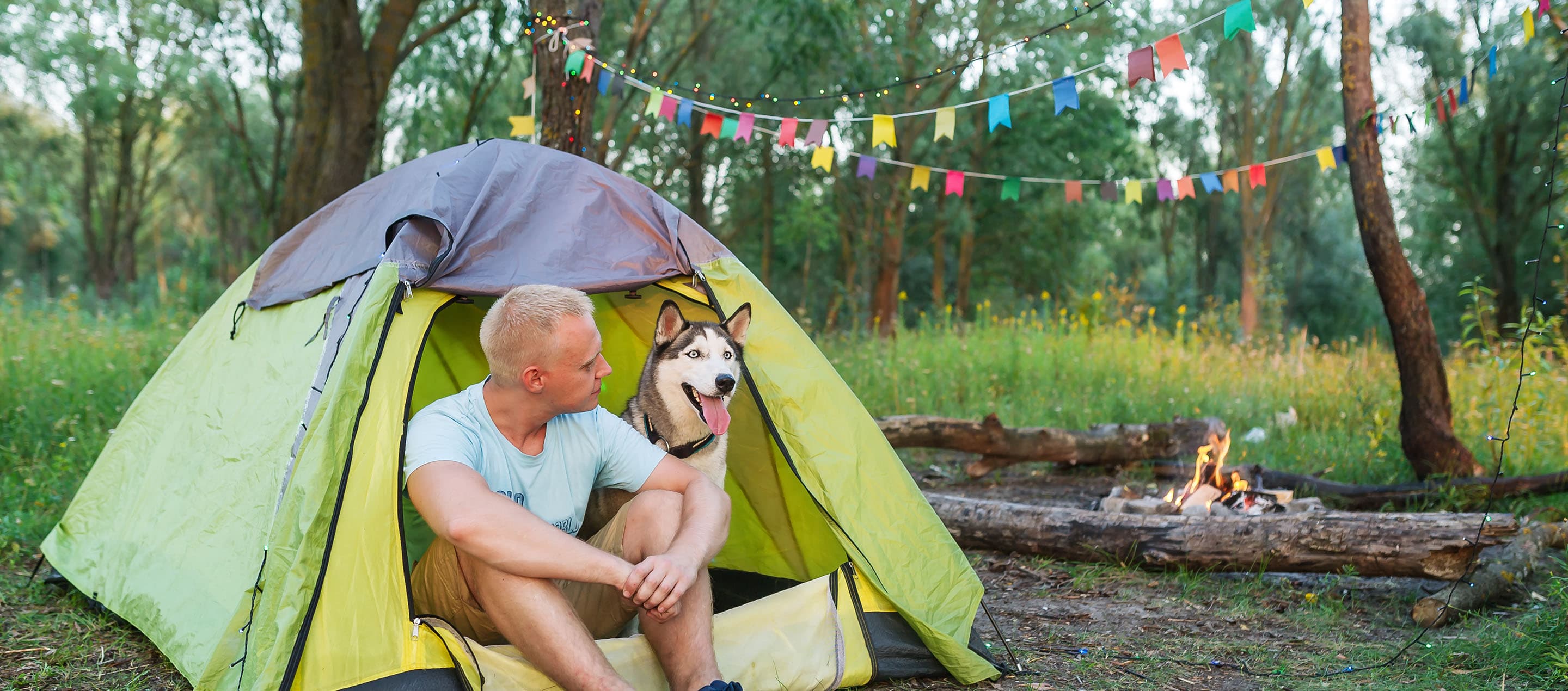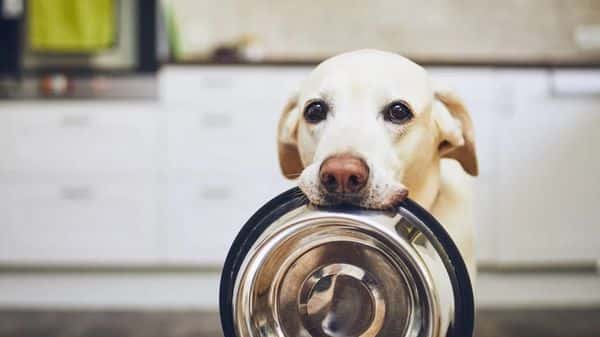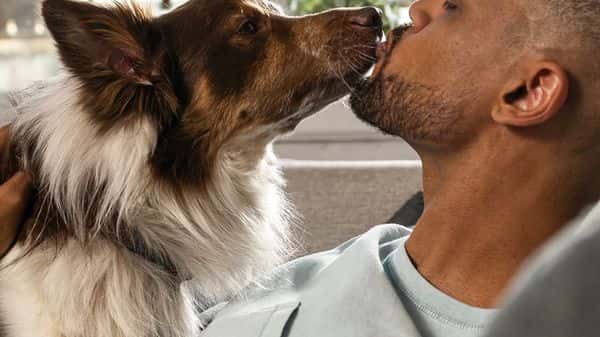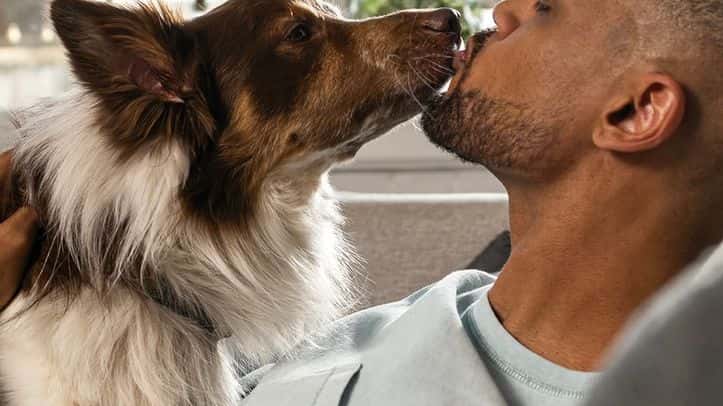
Tips
Camping With Dogs: What You Need to Know
5.30.2022
Many dogs love camping. It's the perfect chance to see, smell, taste and experience something new and exciting! June is National Camping Month, so if you’ve never been camping with dogs before, now is the perfect time to try. For many pet parents, outdoor adventures are made even better by the presence of your four-legged companion. If you're a beginner to camping with dogs, don't make the mistake of assuming that Fido will behave the same at the campsite as he does in your living room. It's a whole new world out there for your dog, and you never know exactly how they'll react. So if you're not sure how to prepare, just remember: the key to camping with dogs is to plan for anything!!
What To Do Before You Go Camping With Dogs
Always check campsite regulations before you rock up with your pack of hounds in tow. This is not the time to ask forgiveness instead of permission! While many campsites in the United States are pet-friendly, rules do vary. Your campground may restrict the type and length of leashes you use in order to guarantee control over your pet. They may even restrict the size, breed or number of dogs you may bring. Camping with dogs requires you to be extra considerate to your fellow campers. Many campsites enforce a “no noise” rule overnight — and only you know if Fido loves to sing the song of his people at 3 am! As part of your preparations, don't forget to schedule a pre-adventure vet appointment to confirm your dog is healthy enough for travel. Make sure your pup is fully up to date on their vaccinations and preventatives, especially for heartworm and other mosquito-borne or tick-borne diseases. While you're at it, why not get your dog microchipped and groomed? A microchip is the #1 way to reunite a lost pet, and a crisp new hairdo actually helps your dog keep cool in summer or warm in winter. Finally, make time to review basic obedience commands such as "leave it," "stay" and "come" in the weeks or even months leading up to your trip. Camping with dogs quickly becomes a stressful experience if you can't control your pup. Plus, a reliable “come” isn't just polite to your fellow campers — it may one day save your dog’s life! Once those commands are solid while there are no tempting distractions, review the same behaviors with your dog in the outdoors -- not just in the quiet of your cozy living room. Remember, the campsite will be one of the most stimulating places your pup has ever been! If you anticipate Fido may have trouble settling down in your tent in the evening with all the excitement, remember that there are things to do with your dog at night to cue to them that it's time to relax and unwind. Start using these cues before you go on your trip, so that the association is already established. As you're training, don't forget one of the best tips on dogs: the right currency goes a long way! Using high-value training treats will motivate your dog to focus and learn those good behaviors quickly.
What to Bring When Camping With Dogs
There are a few essential items for camping with dogs that always need to be a part of your packing plans! A fully stocked dog first aid kit should always be in your vehicle (alongside a first aid kit for humans). Also, your dog should wear their identification tags with your contact info at all times. If you already know your campsite number, write that on your dog's collar as well, or do so as soon as you arrive. One of the most serious risks of camping with dogs is that your pup will escape from you and get lost. That's why you should take updated photos of your dog before you go, just in case Rover does decide to roam. Be sure to include shots of any of your pup’s uniquely distinguishing features, like fur patterns or scars. Print all these photos and bring the paper copies with you on your trip. That way, even if your phone is lost or dead, you can still show people photos of your runaway pooch. If you can afford to outfit your pup with a GPS tracking collar, that is one of the most reliable ways to track down a lost dog. If a tracking or smart collar is out of reach, consider purchasing a neon or reflective collar instead so that your dog can be more easily spotted in the dark. (Or, if you want to go the DIY route, attach a fresh glow stick to their collar each night!) While packing the items you would need in an emergency, don't neglect the daily essentials. Bring a secure stake with tether to keep your dog safely contained, as well as an extra leash in case one breaks. A portable, lightweight crate is another good option for keeping your pup secure. Of course, camping is hungry business! Always pack extra helpings of your best furiend's food. Vital Essentials freeze-dried patties or nibs already come in a conveniently resealable bag, and are easy to portion out, so your pup can continue on their healthy raw diet even when away from home. Other items you should bring for your dog's comfort and convenience include a cozy pet bed, a travel dog shower with towels, and a few of Fido's favorite toys and treats. Finally, just because you're going 'into the wild' doesn't mean you can be uncivilized -- yes, you do still need to bring poop bags when camping with dogs!
Safety Tips For Dog Friendly Camping
There are several safety considerations to keep in mind when camping with dogs. Hydration is perhaps the most important of all: your dog should ALWAYS have access to clean, fresh water. And no, that doesn't mean a nearby creek – untreated water is just too risky. One important but often-overlooked safety tip is to protect your dog's paws. Hot rock, sharp stones, fallen thorns, broken ice...there's no limit to the number of dangerous things your pup's pitter-patters could step on. Train your dog to tolerate wearing protective booties, so they can explore the woods while staying safe (and fashionable!). It's always wise to be wary of wildlife while in the great outdoors, but camping with dogs means you need to be especially vigilant. Know if the area you are staying has any wolves, bears or cougars – or even grumpy badgers! And it's not just the animals – plants can be dangerous, too. Know how to recognize poisonous plants in your area (particularly if your dog is a plant-chewer!). That especially includes poison ivy, poison oak and poison sumac. Don't neglect bug protection, as mosquitos, ticks and even flies can carry diseases. If your dog has any known allergies – to bees and wasps, for example -- bring any medication they may need. Finally, one of the #1 rules of camping with dogs is to NEVER leave your pup unattended! Even if you think your dog is secure, there's always the chance for things to go wrong. Your pup may escape their crate or tether, or be caught outside in inclement weather, or even – unfortunately – be stolen by an unscrupulous stranger. The only exception to this rule is if you choose to camp in an RV or other lockable vehicle rather than a tent. In that case, you may be okay to leave your dog securely locked inside for a few minutes to an hour, but be careful. You never know when the temperature may change drastically and put your pup at risk. It's much better to take Fido with you on your daily adventures! There are plenty of canine-friendly outdoor activities that you can do while camping with dogs. Hiking on trails, long walks on the beach, or watersports like boating, kayaking or canoeing can all be enjoyed with your dog by your side. And we all know picnics in the park are even better with your pup (even if they're begging for your sandwich).
Weather Considerations When Camping With Dogs
To prepare for camping with dogs in hot weather, familiarize yourself with the signs of dehydration and heat stroke. Large, fluffy or "flat-faced" breeds are especially at risk of. A mastiff, Newfoundland or bulldog can overheat to life-threatening levels VERY quickly – another reason why it's crucial to never leave Fido alone. Kampgrounds of America advises:
“To prevent overheating, watch your dog closely for the following symptoms:
Panting
Heavy breathing
Restlessness
Weakness
Disorientation
Agitation
Dry gums
Bright red tongue
If your dog is experiencing any of these symptoms, use the digital thermometer in your first-aid kit to take a temperature reading. A temperature of 104 or higher indicates overheating. Move your dog to a cool location, preferably in air conditioning or shade. Give them a bowl of cold water. Apply a wrapped ice pack to their groin area and continue taking their temperature until they have cooled down. Should symptoms worsen, or if your dog is lethargic, unwilling to move or is having trouble breathing, take them to an emergency veterinarian as this could indicate heat stroke."
Don't forget about sun protection, either! Yes, dogs can get sunburned, especially on their nose or ears or if they have a thin coat. Finally, when camping with dogs in cold weather, keep an eye out for the signs of frostbite or hypothermia. If your dog has a thin coat and low levels of body fat they will be especially susceptible to the cold. Greyhounds, pointers and similar breeds tend to get chilled very quickly. Bring plenty of blankets for those cold, wet or rainy nights! If you go camping in the snow, NEVER allow your dog to lick any puddles or objects that may contain antifreeze – a poison that is absolutely lethal to dogs even in small quantities. Camping with dogs is a fun way for you to bond with your best furiends -- but it can be challenging. If you're new to canine-friendly camping, you may be looking for "hacks" to make camping with dogs a bit easier. Take advantage of all the information you can find for outdoorsy pet parents, including tips on dogs and how their behavior may differ when camping. Ultimately, when camping with dogs for the first time, your only goal should be to make it a positive experience for you both. You and your pup ought to arrive home muddy, smelly, happy and ready to do it all again! Explore other ways to get outdoors with your pet.





